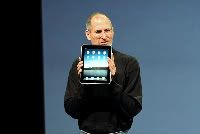Should Government Pick Winners and Losers in Energy Technology?
For those of you who, like me, watch very little commercial news television, here’s a sample of reporting to consumers on the energy industry. This happens to concern Solyndra – a debacle that’s thrown a cold swimming pool of water on the already floundering US renewable energy industry.
Btw, I’d love to know how this happened in the first place. I talk to people in the private sector all the time who swear they saw this train-wreck coming far in advance. At a meeting I had with Kleiner Perkins managing partner Ray Lane earlier this year, he told me, “We knew that technology wouldn’t scale. We had been telling the DoE that for over a year, but no one would listen.”
So what are we to believe? That the public sector knew this too but made it happen for “political purposes?” Sorry, I think there’s more to the story than that. Yet God help me if I can add more clarity. I feel rather like those trying to figure out the JFK assassination; I know what didn’t happen, but not exactly what did. (more…)







 Soon we’ll be getting started with a blog that I propose to call “Corporate Role Models,” in which we herald some of the good things corporate citizens are doing in lowering carbon footprint, and aiming at sustainability more generally. We’re trying to focus especially in lifecycle analysis, looking backwards at all parts of the supply chains, and looking forward at the use and ultimate disposal of products.
Soon we’ll be getting started with a blog that I propose to call “Corporate Role Models,” in which we herald some of the good things corporate citizens are doing in lowering carbon footprint, and aiming at sustainability more generally. We’re trying to focus especially in lifecycle analysis, looking backwards at all parts of the supply chains, and looking forward at the use and ultimate disposal of products.